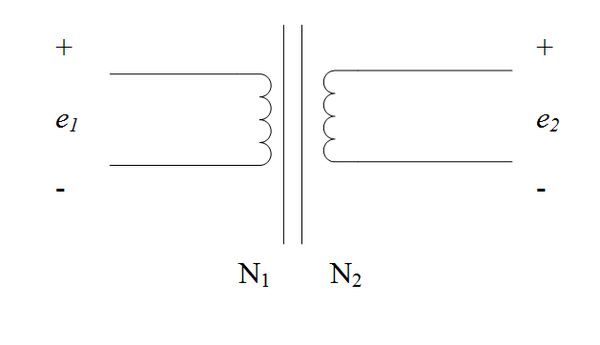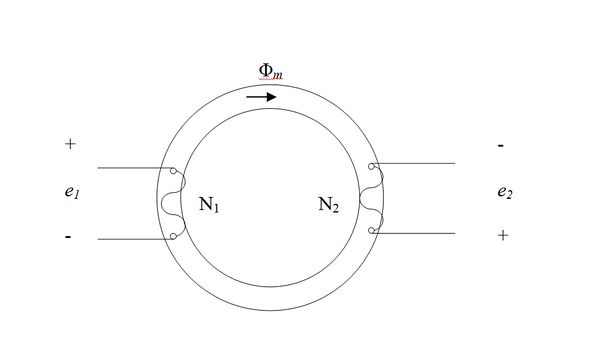Example Problems with Transformers: Difference between revisions
No edit summary |
No edit summary |
||
| Line 6: | Line 6: | ||
<u>'''Problem:'''</u> |
<u>'''Problem:'''</u> |
||
A step down transformer has a winding of <math> N_1 = 10 \text{ turns and } N_2 = 2 </math> turns. (a) If the input voltage is 1200V, what is the resulting output voltage? (b) If the input and output currents are <math>5A \mbox{ and } 20A</math>, respectively, what is the current loss due to the leakage inductance |
A step down transformer has a winding of <math> N_1 = 10 \text{ turns and } N_2 = 2 </math> turns. (a) If the input voltage is 1200V, what is the resulting output voltage? (b) If the input and output currents are <math>5A \mbox{ and } 20A</math>, respectively, what is the current loss due to the leakage inductance, <math>i_{m}(t)</math>. |
||
<center> |
<center> |
||
| Line 33: | Line 33: | ||
<math> e_2 = \left( \frac{N_2}{N_1} \right) e_1 = \left( \frac{2}{10} \right) 1200V = 240V </math> |
<math> e_2 = \left( \frac{N_2}{N_1} \right) e_1 = \left( \frac{2}{10} \right) 1200V = 240V </math> |
||
</div> |
</div> |
||
<br/> |
|||
b) From the figure above, we need to find the true value of current (i.e. the current that is not lost by leakage inductance). To accomplish this we will use equation 5-40 (Mohan 5-23) to obtain the value of <math>i_{1}^{'}</math>. That is, |
b) From the figure above, we need to find the true value of current (i.e. the current that is not lost by leakage inductance). To accomplish this we will use equation 5-40 (Mohan 5-23) to obtain the value of <math>i_{1}^{'}</math>. That is, |
||
Revision as of 18:02, 26 January 2010
Transformer Example
Kevin Starkey, Nick Christman, Aric Vyhmeister
Problem:
A step down transformer has a winding of turns. (a) If the input voltage is 1200V, what is the resulting output voltage? (b) If the input and output currents are , respectively, what is the current loss due to the leakage inductance, .
Solution:
a) By modifying equation 5-39 (Mohan 5-22) we can obtain an equation for the output voltage. That is,
.
With the information provided we can now determine the output voltage:
b) From the figure above, we need to find the true value of current (i.e. the current that is not lost by leakage inductance). To accomplish this we will use equation 5-40 (Mohan 5-23) to obtain the value of . That is,
.
Now from equation 5-42 (Mohan 5-23) we can obtain the current loss due to the leakage inductance, which is
.
Therefore, the current loss in our transformer is , which means this specific transformer is very "leaky."










